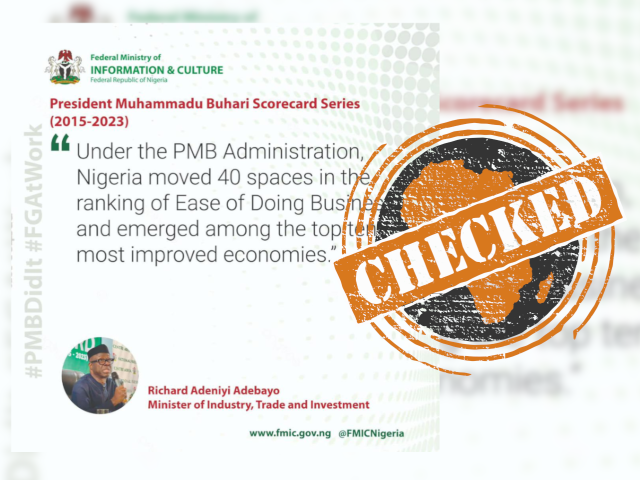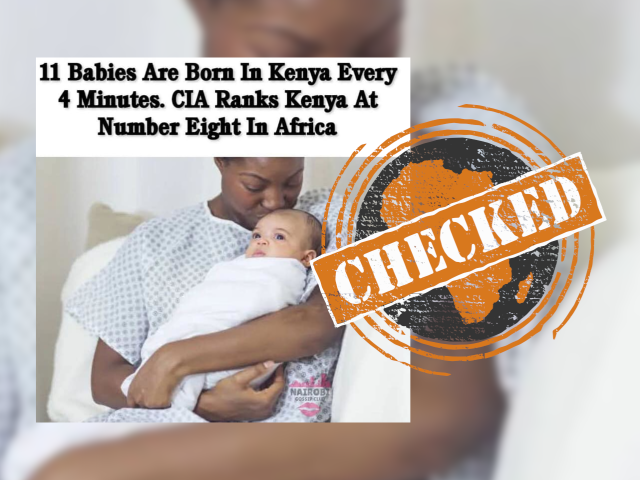-
While announcing an investment of US$500 million in girls’ education in Nigeria, the World Bank outlined the difficulties faced in this area, particularly in the north of the country.
-
It said that one secondary school was serving up to 10 primary schools. This would have been accurate in 2010 - recent data shows the ratio is half of the bank’s estimate.
-
The bank’s claim that 80% of poor households in Nigeria are found in northern states is unproven.
The sizable investment was widely reported in the national media. But are the bank’s claims accurate? We checked.
This claim should only have been in reference to public schools, Aby Toure, a communications officer at the World Bank, told Africa Check. She said the figure was sourced from a June 2020 project document.
(The project document has a slight error. It says that “the lack of secondary schools is significantly greater in the north with more than 10 primary schools for every primary school”.)
Mansir Nasir, a senior external affairs officer at the bank, gave more details and said the data was gleaned from the 2015/16 education management information system and the 2018 national personnel audit. The audit was compiled by Nigeria's universal basic education commission.
Audit retracted that World Bank based figures on
By law, the first six years of primary education and the first three of junior secondary school are free and mandatory.
In its formal document for the funding, the World Bank said the most recent data it had, from the education management information system, showed there were 21,688 senior secondary schools in 2015/16.
But in December 2018, the basic education commission retracted the bank’s second data source. Education groups and activists said the 2018 personnel audit was riddled with errors.
For example, the audit captured figures from Enugu state as being from Ondo state, while it did not record data for private schools in most of the country’s southwestern states. Similar errors were also identified for Anambra and Imo states in the southeast.
The audit also didn’t include full data on senior secondary schools, as they are not considered part of basic education.
What does the most recent data show?
The claim would be incorrect if any part of it was based on the recalled audit, Oriyomi Ogunwale, who is the project lead at Eduplana, an organisation that focuses on education in Nigeria, told Africa Check.
“The 2018 national personnel audit report has been pulled down due to numerous errors. I advise that the claim be discarded and the report not used,” Ogunwale said.
For accurate data, he directed Africa Check to statistics on public and private basic education compiled in 2018 by, among others, the basic education commission, the education ministry and the National Bureau of Statistics.
Actual ratio about half that claimed by World Bank
The statistics from the digest of basic education statistics on public and private schools show that as of 2018, there were 61,175 primary schools and 14,491 secondary schools in the north.
This works out to about four primary schools for every secondary school in Nigeria. When only public schools in the north are considered, the ratio rises to about five primary schools (43,480) for every secondary school (7,819).
This is about half the bank’s estimate. The northern state with the most primary schools for every secondary school is Kebbi, with a ratio of eight to one. If only public schools in Kebbi are counted, the ratio is five to one.
The bank’s claim would have been accurate 10 years ago. In 2010 there were an average of seven primary schools to every secondary school in the north. Kaduna state had 10 primary schools to every secondary school.
Suleiman Bello, a professor of educational technology in the faculty of education at the University of Maiduguri in northeastern Nigeria, said for many years the priority in the north was teaching children to read and write, which had overshadowed the need to establish secondary schools.
But he told Africa Check this was starting to change, as more states were expanding current secondary schools or building new ones.
| The case for educating adolescent girls While making a case for educating more adolescent girls, the World Bank notes that poor infrastructure and a lack of water and sanitation makes it difficult for girls to stay in school. Further, there is lower investment in girls education in the northern states. The development lender projects that if these conditions stay the same, “1.3 million girls out of the 1.85 million who began primary school in 2017/18 in the northern states will drop out before reaching the last year of junior secondary school”. The bank suggests that educating girls, especially at the secondary level, significantly improves their lives. This includes through “a reduction in child and maternal mortality rates, improvements in educational outcomes of offspring, and reducing poverty and promoting equitable growth”. Each additional year of secondary school is associated with, “on average a 10% increase in income”, it adds. |
The World Bank told Africa Check it had intended to say that 87%, and not 80%, of poor households are in the north.
The 87% estimate was based on “the 2015/16 general household survey by the National Bureau of Statistics”, senior external affairs officer Mansir Nasir said. (Note: We could not find this estimate in the survey.)
While the household survey did capture household income and other socioeconomic indicators, there is more recent data. Leo Sanni, a statistician at the bureau, referred Africa Check to the 2019 report on poverty and inequality in Nigeria.
Released in May 2020, it measured poverty and living standards by surveying 22,110 households nationally from September 2018 to October 2019.
It found that 40.1% of Nigerians qualified as poor, which meant that when inflation was accounted for, they had a per capita spending of less than N137,430 (US$356.31) per year.
This meant that more than 82.9 million Nigerians “are considered poor by national standards”, the report said. (Note: Due to the Boko Haram insurgency, this number excludes Borno state, as only households in safe-to-visit areas were interviewed).
High poverty numbers in the north
The data shows northern states have the highest share of their populations living in poverty. The 10 states with the smallest proportions were all in the south.
But it does not break down the information by households.
Dr Baba Madu is head of national accounts and macro-economic analysis at the statistics bureau. He said the latest data does not speak to the bank’s claim.
“No, there isn't any dataset in the poverty report that suggests that almost 80% of households considered poor, out of the 22,110 sampled, were found in the north,” he told Africa Check.
As we could not trace the source of the bank’s statistic, we rate the claim as unproven.
Additional reading:
https://africacheck.org/reports/coca-cola-is-right-50-of-young-women-in-northern-nigeria-have-no-formal-education/





Add new comment